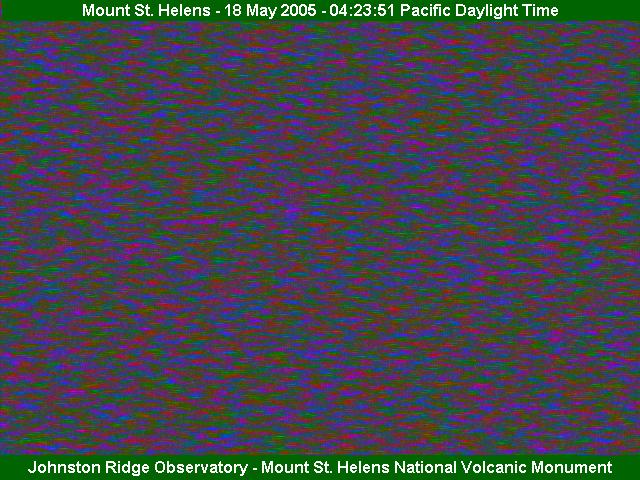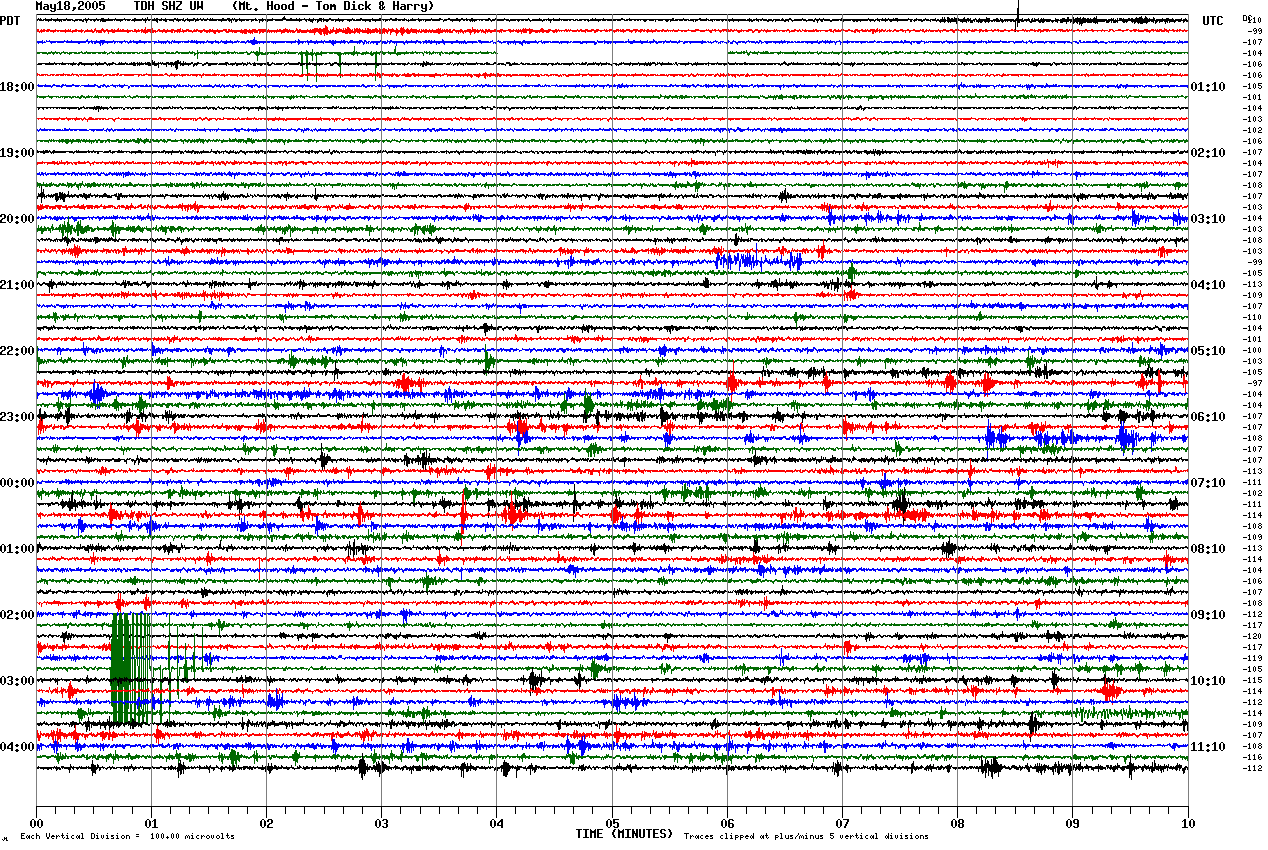It's raining ash all over again
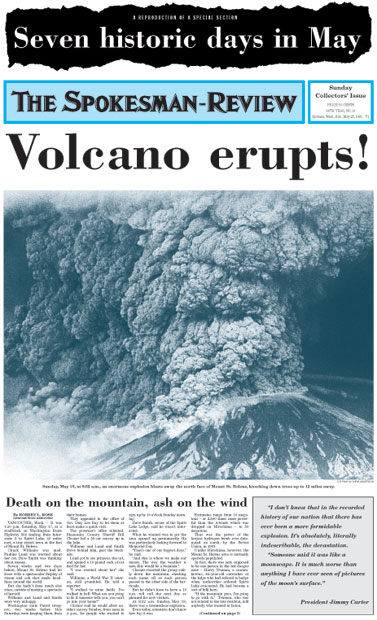 Here's
a sneak peak at tomorrow's special section - we're recreating the May
18, 1980 newspaper, which was no small feat to put together. We've also
got a photo slideshow or two planned for the Web site - stay tuned.
Here's
a sneak peak at tomorrow's special section - we're recreating the May
18, 1980 newspaper, which was no small feat to put together. We've also
got a photo slideshow or two planned for the Web site - stay tuned.
Still no souvenir photos in my inbox - I had a feeling I'd be setting the bar too high with the "Cats" music box.
Also - columnist Doug Clark has found a use for all that ash you've been hoarding away.
Well, blow me down
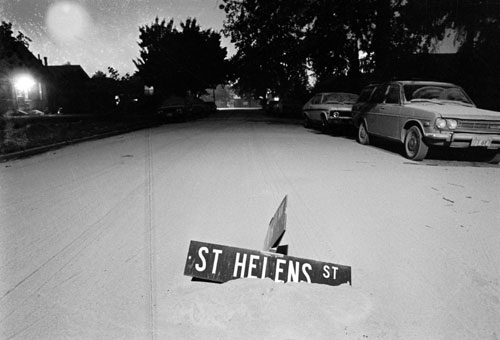 Saw this photo from the Yakima Herald-Republic on the wire - oh, the irony...
Saw this photo from the Yakima Herald-Republic on the wire - oh, the irony...
KSPS had a great documentary on the 1980 eruption on Sunday afternoon, and it looks like they'll air it again Wednesday night at 8 p.m. and 10:35 p.m. (PDT). You'll hear some amazing stories - including an interview with one of the first people to go into the blast zone looking for survivors.
Calling all souvenirs
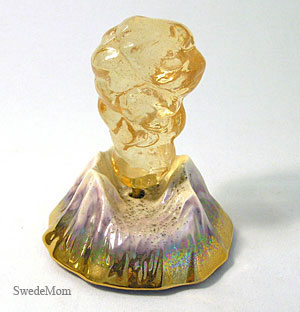 Found this on eBay. If you wind up the glass ash plume (say that five times fast), it actually plays -- really -- "Memory" from "Cats."
Found this on eBay. If you wind up the glass ash plume (say that five times fast), it actually plays -- really -- "Memory" from "Cats."
This might be the week to dust off those St. Helens souviners you've got cluttering up your closets. Drop me an e-mail with photos and I'll post 'em up on the blog. The more tacky and bizarre, the better.
Blast from the past
We've been a little tied up over here at the S-R, but that doesn't mean we've forgotton the eruption anniversary next week. Be sure to get ahold of Wednesday's paper before the dog does -- we've got a surprise coming.
Rising from the ashes
The 25th anniversary of the eruption is just a week away. Smithsonian magazine offers this look at the re-emergence of life around the volcano.
Just in case...
Those traveling out West for the 25th anniversary of the 1980 eruption next Wednesday might want to brush up on your ash driving skills.
Volcanic threat report
Here's a link to a USGS report assessing the threat posed by volcanos in the U.S.
Mystery glow explained?
Luscombe has posted a movie of the mystery glow enlarged 1600% . According to the blog, Darrel suspects a faulty pixel but is asking for help verifying from anyone experienced with CCD cameras.
Mystery glow on west flank
Volcano watcher Darrel Luscombe reports seeing a mysterious light on the volcano in one of his nighttime movies.
It could be another hotspot, or perhaps an illegal campfire. Or, it could be a faulty pixel on his camera.
My money's on the latter. You be the judge. Look for the blip on the right-hand side of the screen.
Seeking your ash stash
S-R columnist Doug Clark found a guy who has had a garbage can full of Mount St. Helens ash stowed away in his garage for 25 years. Evidently he just scooped it out of his driveway and never got around to disposing of it.
Anyone else out there got any ash hidden away? Doug wants to hear from you: dougc@spokesman.com
Time-lapse images
Here's
a site that has really cool time-lapse animation of Mount St. Helens
and other places of geological interest. (My personal favorite is Old
Faithful, where you can watch the ebbing and flowing of the crowd of
tourists as the geyser erupts):
http://www.zeitcam.com/webcam/sainthelens
(Hats off to Dave Smith in Seattle for the tip).
Updated wilderness area maps available
A new, color map of the Mount Adams, Indian Heaven and Trapper Creek wildernesses on the Gifford Pinchot National Forest is available for sale at Forest Service offices and other recreational outlets.
Another anniversary event
Open house at the Cascades Volcano Observatory in Vancouver, Wash. on May 21.
Also, the Forest Service has a full slate of commemorative events.
Report calls for increased volcano monitoring
Mount St. Helens gets a lot of attention, but there's other hazards out there...
Free admission for 25th anniversary of eruption
In
memory of the 25th anniversary of the 1980 eruption, all fees
(including visitors center admission) will be waived at Mount St.
Helens national monument on Wednesday, May 18.
Also, the Johnston Ridge Observatory is set to reopen Friday, May 6, for the summer, and other facilities are expanding hours.
Link
Cool time-lapse photography of steam eruption...
Here's a time-lapse photography sequence of the March 6 steam eruption. It's from an interesting volcano-cam site, put together by a Portland resident who has a view of the mountain on clear days.
Emerging dome evolving on St. Helens
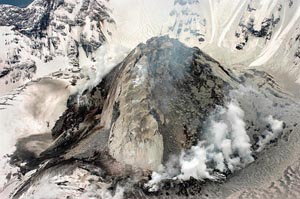
Check out this story, from AP:
Surging seismic activity at Mount St. Helens has changed the whale-back shape of the volcano's emerging new dome, leaving it more like the back of a stegosaurus – a dinosaur with bony plates of armor along its spine.
Action inside the crater keeps destroying instruments placed on the new dome, so it's not clear how much movement has occurred there.
Infrared image of the mountain
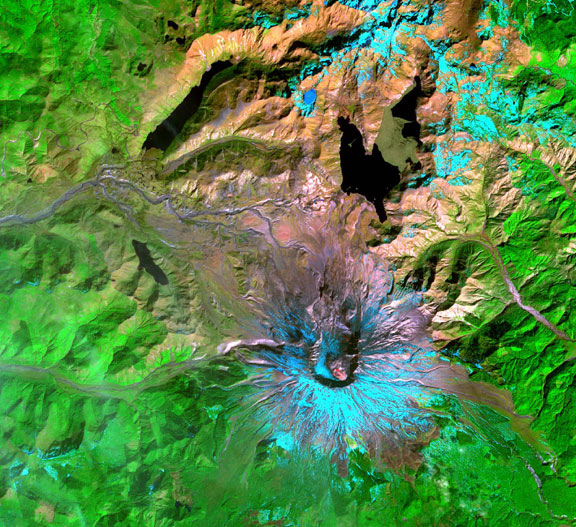 According to this web site here is what this image represents:
According to this web site here is what this image represents:
This
ASTER image of Mount St. Helens was captured one week after the March 8
ash and steam eruption, the latest activity since the volcano's
reawakening in September 2004.
The new lava dome in the southeast part of the crater is clearly visible, highlighted by red areas where ASTER's infrared channels detected hot spots from incandescent lava. The new lava dome is 500 feet higher than the old lava dome, and still growing.
In this band combination, vegetation is green, snow is light blue, and bare rocks are tan. This image combines visible and infrared bands, covers an area of 24.4 x 21.9 km, and is centered near 46.2 degrees north latitude, 122.2 degrees west longitude.
Observatory to re-open May 6
Here's a story that says "The Johnston Ridge Observatory, located 5.5 miles from St. Helens' crater, will reopen May 6, and the five-mile no-go zone around the mountain will be lifted."
Rangers are issuing climbing permits for later in the year, but chances are termed "remote" that the climbing will actually be allowed.
News from 25 years ago
The Longview Daily News, which won a Pulitzer Prize for its coverage of the 1980 Mount St. Helens eruption and the aftermath is publishing stories from 25 years ago. Here's the story from March 25, 1980, about earthquakes rumbling under the mountain. You have to remember that there were lots of small earthquakes and minor eruptions leading up to the big, May 18, 1980, eruption. Makes for interesting reading.
The News Tribune in Tacoma is doing a similar look at history.
Experts say volcano's latest activity suggests explosive potential
Here's a story about how the scientists are surprised by the latest outburst.
What scientists do know is that the plume rose very rapidly and much higher than in previous months. That indicates that there was an explosive element inside, rather than just a collapse of the crater's roof. "The fact that it rose so fast and so high means it's not just a simple collapse of the lava dome," said Major. "If so, the plume would have risen more lazily."
Thar she blows -- well, sort of
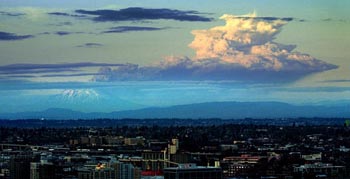
Here's the latest on today's spectacular event.
Glacier gets a name
(AP) - A glacier in the crater of Mount St. Helens has gotten a name, but it may be short-lived as emerging molten rock continues to warp and melt the snow and ice.
The Washington State Board on Geographic Names unanimously chose Tulutson, the Cowlitz Indian word for ice, last week over three other finalist names _ Crater, Spirit and Tamanawas, a loose tribal translation meaning "spiritual guidance."
This spring marks the 25th anniversary of the devastating eruption of May 18, 1980.
In the succeeding years the glacier formed on the inside of the south wall of the gaping, horseshoe-shaped crater that opens to the north. Snow accumulated each winter, became compressed into ice and was further protected from sunlight and warm weather by rock and debris falling from the steep slope.
The glacier is now wrapped around the 876-foot-high lava dome that was formed in a series of much quieter eruptions between 1980 and 1986. It is one of the few glaciers on Earth that have grown during the past few years. Most glaciers have been shrinking. a development cited by many scientists as a sign of global warming.
The newer lava dome, still growing, has severely warped the east arm of the glacier dramatically and the main part of the glacier has been slipping northward down the crater slope at about 4 feet a day, according to the U.S. Geological Survey.
The amount of volume lost in the last five months remains undetermined.
Timber grows fast in shadow of volcano
It's been a little less than 25 years since Mount St. Helens' explosive 1980 eruption. But already, timber that was planted after the eruption is being harvested from the blast zone.
In January, contract loggers began thinning stands of Douglas fir from Weyerhaeuser land that once looked like it might never produce another tree.In the Green River Valley, near the outer fringe of the blast zone, there are now no obvious signs of the volcano's May 18, 1980, catastrophic eruption. The forest floor is shaded under a canopy of green. Ash that once blanketed the ground has long since mixed into the soil.
"It's a time of immense pride for all of us at Weyerhaeuser," spokeswoman Jackie Lang said. "By all definitions (the blast zone) was a wasteland 25 years ago. It's a complex and healthy forest today because of our active forest management."
Dome growth slows
Here's a story
about how the growth of the new lava dome inside the crater of Mount
St. Helens has gradually slowed and become less steady since it began
in early October.

